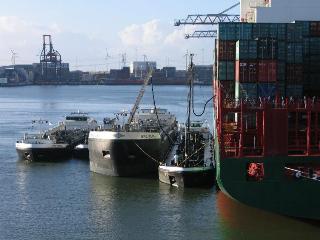 Credit rating company Moody’s Investors Service has upgraded its outlook for the global shipping industry to stable from a negative rating in April 2014, but links its forecast to cost reduction efforts instead of improving business.
Credit rating company Moody’s Investors Service has upgraded its outlook for the global shipping industry to stable from a negative rating in April 2014, but links its forecast to cost reduction efforts instead of improving business.
In a recent report, Moody’s Japan K.K. forecasts moderate EBITDA (earnings before interest, taxes, depreciation, and amortization) growth amid continued vessel oversupply.
“We expect mid- to high-single-digit percentage aggregate year-over-year EBITDA growth for Moody’s rated shipping companies over the coming 12-18 months,” said Mariko Semetko, a Moody’s assistant vice president-analyst. “But this growth reflects reduced costs rather than improved fundamentals.”
The just-published industry outlook “Global Shipping Industry: EBITDA Growth Will Be Moderate as Shipping Capacity Continues to Outstrip Demand” reflects Moody’s expectations for the fundamental business conditions in the industry over the next 12 to 18 months.
The supply of shipping vessels will remain higher than demand for most shipping services, said Moody’s. Slow global economic growth and continued deliveries of new vessels have led to a capacity glut, which limits companies’ ability to raise the rates they charge for shipping freight, constraining revenue and EBITDA growth.
Moody’s expects that this supply-demand imbalance and somewhat stable fuel costs will continue, and that EBITDA growth will come through cost-cutting measures. These include optimizing cargo routes through technological means, refueling at ports with relatively cheap prices, operating vessels at reduced power to reduce fuel costs, and increasingly using newer, more efficient vessels.
“EBITDA growth will come as shipping companies continue to increase operating efficiencies and reduce costs,” added Semetko, “especially as we expect fuel prices to remain stable.”
Moody’s expects bunker fuel costs to remain around US$600 per metric tonne during the outlook period. Bunker fuel prices have averaged around $600 per metric tonne over the past year and dipped to about $570 per metric tonne in late September, down from the peak of nearly $740 per metric tonne in 2012.
But freight rates will vary by sector, with container, dry bulk, and crude oil tanker segments seeing continued low freight rates, while product tanker rates could improve modestly as supply is tighter over the next 12 to 18 months, said Moody’s. It expects that product tanker deliveries will increase beyond its outlook period, which will make sustained rate increases difficult.
“Moody’s would change the outlook back to negative if there are signs that shipping supply growth will exceed demand growth by more than 2% or that aggregate EBITDA will decline by more than 5% year over year,” it added. “We would consider a positive outlook if the oversupply of vessels declines materially and aggregate year-over-year EBITDA growth appears likely to exceed 10%.”
Photo: Korrigan




